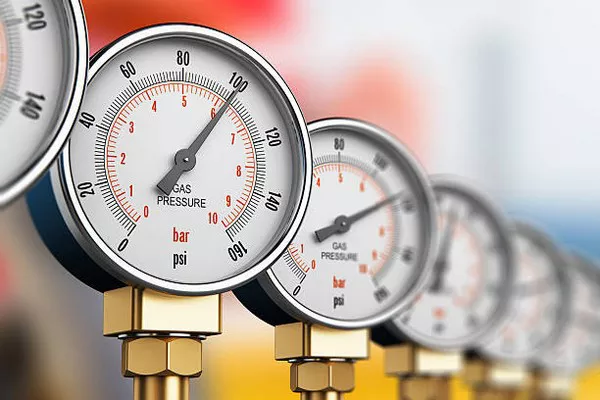Water pressure is a critical factor in many industrial, commercial, and residential applications. It ensures the proper functioning of plumbing systems, irrigation setups, fire suppression systems, and industrial processes. To measure and monitor water pressure accurately, a device known as a water pressure gauge is employed. This article delves into the definition, types, working principles, applications, and maintenance of water pressure gauges, making it easy to understand their importance and functionality.
What is a Water Pressure Gauge
A water pressure gauge is an instrument used to measure the pressure of water in a given system. It provides readings in units such as pounds per square inch (psi), bar, or kilopascal (kPa), depending on the application. By monitoring water pressure, users can ensure the efficient operation of equipment, detect potential problems, and maintain the safety and longevity of plumbing and hydraulic systems.
Working Principle of a Water Pressure Gauge
Water pressure gauges operate based on fundamental principles of pressure measurement. The most common types use mechanical or electronic methods to translate water pressure into a readable value.
Bourdon Tube Principle: Many mechanical pressure gauges use a Bourdon tube, a curved, flexible tube that straightens when subjected to pressure. The movement is translated into a dial reading through a series of gears and linkages.
Diaphragm and Bellows Mechanism: Some gauges use a diaphragm or bellows that expands or contracts with pressure changes, driving a pointer on a scale.
Digital Sensors: Modern electronic water pressure gauges employ pressure transducers, where changes in pressure cause variations in electrical resistance or capacitance. These changes are converted into digital readings displayed on a screen.
Types of Water Pressure Gauges
There are several types of water pressure gauges, each suited to specific applications:
Analog Pressure Gauges:
- Typically use Bourdon tubes or diaphragm mechanisms.
- Provide real-time, continuous readings without requiring a power source.
- Used in plumbing, industrial systems, and water pumps.
Digital Pressure Gauges:
- Equipped with electronic sensors and digital displays.
- Offer higher precision and easy data recording.
- Used in laboratories, industrial automation, and research applications.
Differential Pressure Gauges:
- Measure the difference between two pressure points in a system.
- Common in filtration and water treatment applications to monitor pressure drops.
Capsule Pressure Gauges:
- Use a capsule diaphragm to measure low water pressures accurately.
- Ideal for HVAC systems and low-pressure water supply monitoring.
Hydraulic Pressure Gauges:
- Designed to handle high-pressure systems, such as in hydraulic machinery.
- Constructed with durable materials to withstand harsh conditions.
Applications of Water Pressure Gauges
Water pressure gauges have a wide range of applications in different fields, including:
Residential Plumbing:
- Helps homeowners monitor water supply pressure.
- Prevents pipe damage from excessive pressure.
Industrial Systems:
- Used in factories and refineries to regulate water pressure in machinery.
- Ensures consistent performance and prevents system failures.
Irrigation Systems:
- Essential for optimizing water distribution in agricultural fields.
- Prevents over- or under-watering crops.
Fire Suppression Systems:
- Ensures that fire sprinkler systems maintain adequate pressure.
- Critical for safety and compliance with fire codes.
Water Treatment Plants:
- Monitors water pressure in filtration and purification processes.
- Ensures efficiency in municipal water supply systems.
HVAC Systems:
- Helps regulate water pressure in heating and cooling systems.
- Prevents damage to boilers and radiators.
How to Install a Water Pressure Gauge
Proper installation of a water pressure gauge is crucial for accurate readings and system efficiency. The general steps include:
Choosing the Right Gauge: Select a gauge that suits the pressure range and environmental conditions of the system.
Determining the Installation Point: Typically, the gauge is installed near the water supply inlet, pump, or pressure regulator.
Shutting Off the Water Supply: To prevent leaks or damage, turn off the main water supply before installation.
Attaching the Gauge: Screw the gauge onto a dedicated test port, pipe fitting, or use a tee connector.
Sealing and Securing: Use Teflon tape or thread sealant to ensure a leak-proof connection.
Turning the Water Supply Back On: Slowly open the valve and check for leaks.
Reading and Calibrating: Verify the gauge reading against expected values and calibrate if necessary.
Maintenance and Troubleshooting
To ensure longevity and accuracy, regular maintenance of a water pressure gauge is necessary. Here are some common practices:
Regular Inspection: Check for signs of wear, corrosion, or leaks.
Cleaning the Gauge: Remove dust and debris from the dial and sensor components.
Calibration: Periodically compare readings with a known standard to maintain accuracy.
Replacing Faulty Parts: If the gauge shows erratic readings, consider replacing the sensor or mechanical components.
Avoiding Overpressure: Use a gauge with an appropriate pressure range to prevent damage.
Conclusion
A water pressure gauge is an indispensable tool for monitoring and maintaining the optimal pressure in various water systems. Whether used in homes, industries, or agriculture, it plays a vital role in ensuring efficiency, safety, and system longevity. By understanding the working principles, types, and proper maintenance of water pressure gauges, users can make informed choices and prevent potential issues in their water supply systems. Investing in a high-quality water pressure gauge and using it correctly will lead to better system performance and cost savings in the long run.

